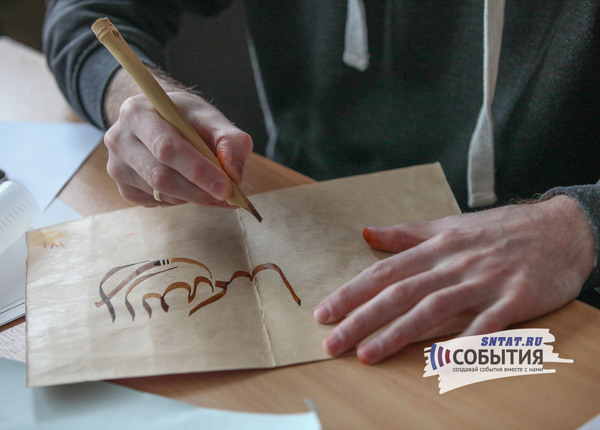Shamail of My Family Campaign Runs In Tatarstan
Shamail means «quality and dignity» in Arabic, in Persian — «holy painting» or «image». This kind of visual art is called a phenomenon of Muslim culture.
— «The most important thing in making a shamail is to pass through the necessary training. The training takes a few years, just like an institute. It is not acceptable to get down to business without any special training. Unfortunately, a lot of people do not understand that now. Everything that is written cannot be considered calligraphy . In fact, there are very strict canons. Previously the Tatars followed them religiously, but now it does not happen all the time», Ramil Nasybullov, modern professional calligrapher speaks about the intricacies of a difficult art.
— «Some ink includes arsenic to get a kind of yellowish colour. There are also silk threads [the artist demonstrates an unusual jar]».
A shamail can be made on many types of paper. One should apply special glue or egg white to it, having soaked it in special liquor before. Tools or Qalams, a calligrapher uses, are also unusual: these are the sharpened sticks made of a special type of bamboo. Although, as the master admits, it is best to use Iranian reeds for this job. It is pre-treated with various preparation chemicals.
— «Shamail is not just a colourful canvas. Initially the point of calligraphy was in a perfect form, just as a plan is important in architecture: you can’t build a house without it. This is a special science with its own laws, based on the principle of „the golden section“. If we ignore it, the total essence of work gets lost,» Ramil Nasybullov says.
An artistic phenomenon has been developing differently in each nation. For example, in Turkey, a shamail is a special technique in religious painting on the reverse side of glass , illuminated with foil. In Iran and Azerbaijan it means the image of a Shiite saint or a Muslim shrine. It is a religious sign on the basis of Arabic calligraphy in the form of an easel painting in the Republic of Tatarstan. Moreover, the Tatar shamail is of particular interest to critics. For the Muslims of the Middle Volga, it has become a way of national expression.
 Shamail of My Family Campaign Runs In Tatarstan
Shamail of My Family Campaign Runs In TatarstanSource: sntat.ru



